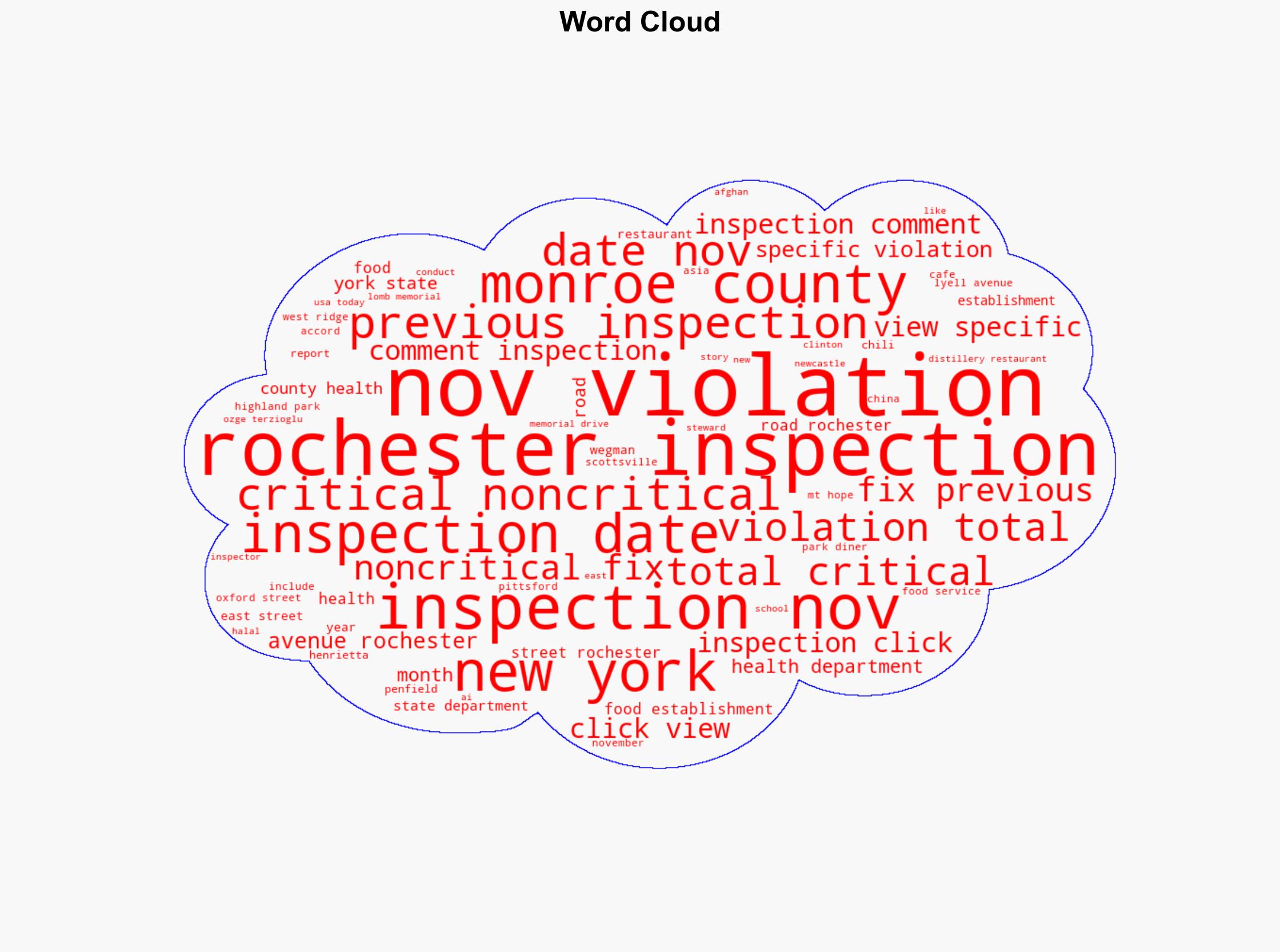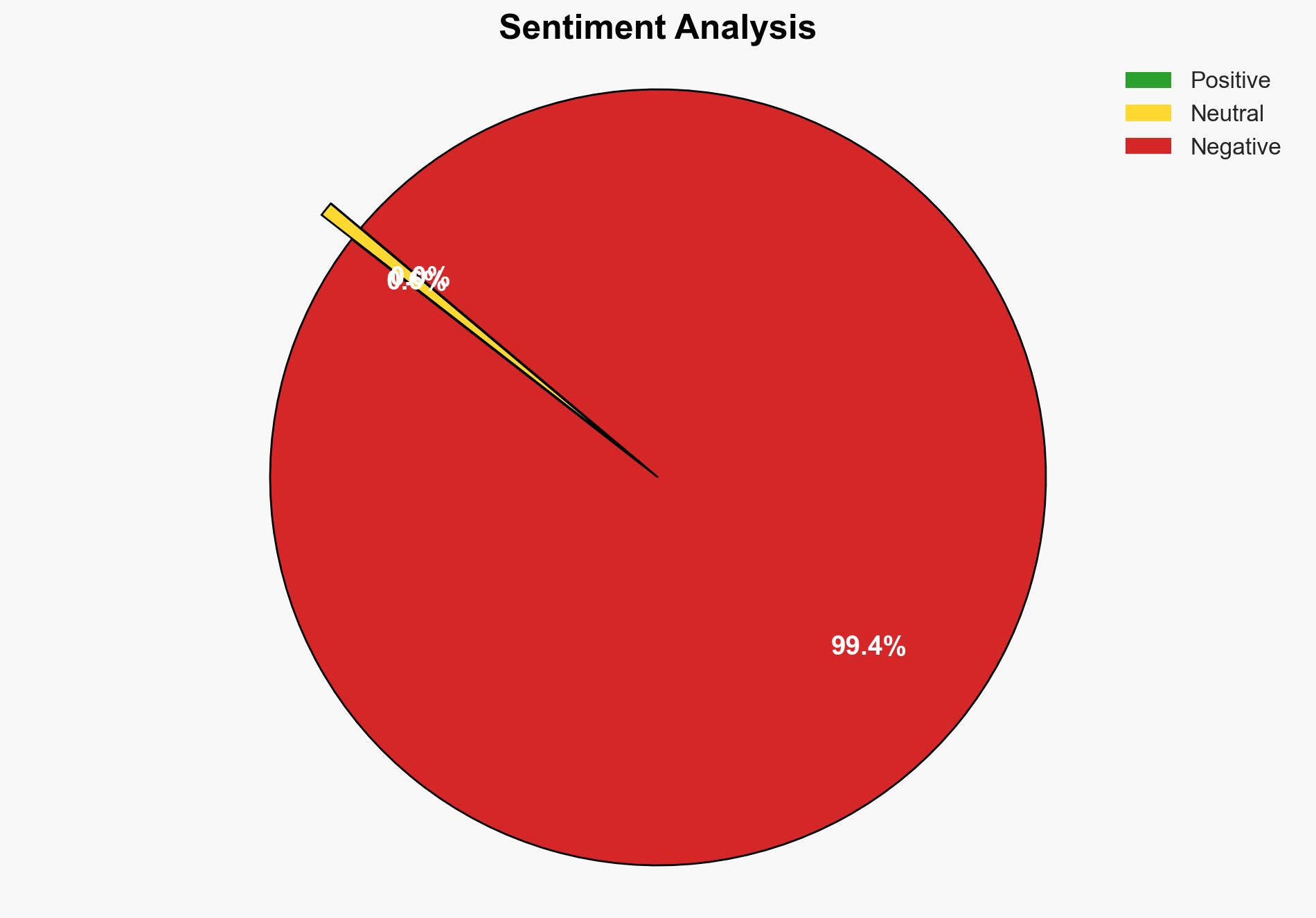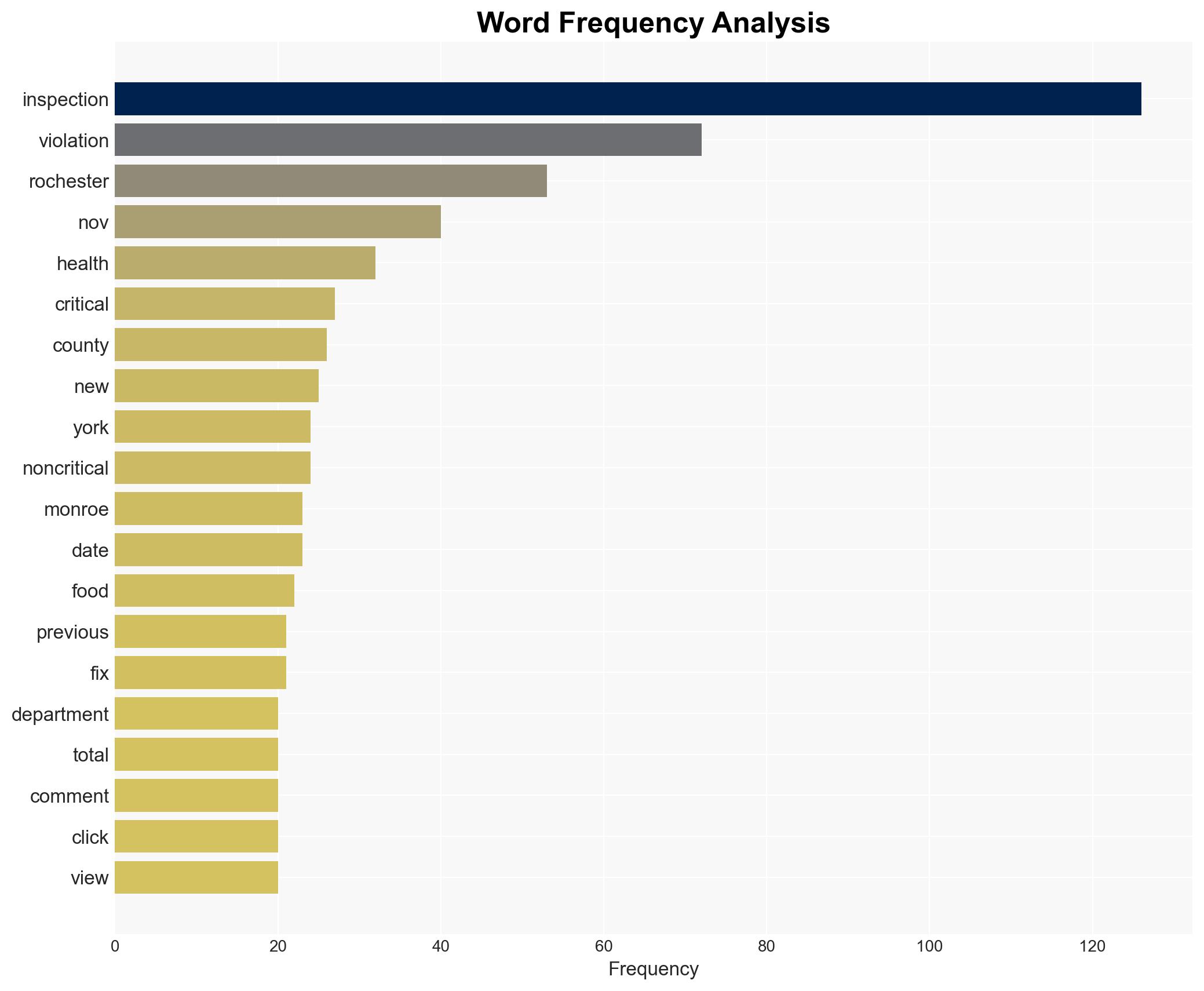22 Rochester restaurants cited for critical health violations in November See the list
Published on: 2025-11-24
AI-powered OSINT brief from verified open sources. Automated NLP signal extraction with human verification. See our Methodology and Why WorldWideWatchers.
Intelligence Report:
1. BLUF (Bottom Line Up Front)
With a moderate confidence level, the most supported hypothesis is that the increase in critical health violations among Rochester restaurants is primarily due to systemic issues within the establishments, such as inadequate training and resource allocation for compliance. Recommended actions include targeted training programs and increased frequency of inspections to ensure compliance and improve public health safety.
2. Competing Hypotheses
Hypothesis 1: The rise in critical health violations is due to systemic issues within the restaurants, such as insufficient staff training, poor resource allocation, and inadequate management oversight.
Hypothesis 2: The increase in violations is a result of more stringent health inspection standards and enforcement by Monroe County Health Department, rather than a decline in restaurant standards.
Hypothesis 1 is more likely given the consistent pattern of violations across multiple establishments and the lack of significant changes in health inspection protocols reported. Hypothesis 2 is less supported due to the absence of evidence indicating a recent change in inspection rigor or criteria.
3. Key Assumptions and Red Flags
Assumptions include the belief that health inspection standards have remained constant and that the reported violations are accurately reflective of the conditions within the establishments. A red flag is the potential for bias in reporting or data collection, possibly influenced by external pressures on the health department. Deception indicators could include deliberate underreporting of violations by restaurants.
4. Implications and Strategic Risks
The primary implication is a potential public health risk if systemic issues are not addressed, leading to possible foodborne illness outbreaks. Economic risks include damage to the reputation of the local food industry, potentially affecting tourism and local business revenue. Politically, there could be increased scrutiny on local government and health departments if violations continue to rise.
5. Recommendations and Outlook
- Implement targeted training programs for restaurant staff focusing on health compliance and safety standards.
- Increase the frequency and randomness of health inspections to ensure ongoing compliance.
- Best-case scenario: Improved compliance and reduction in violations through effective training and oversight.
- Worst-case scenario: Continued rise in violations, leading to public health incidents and economic downturn in the local food industry.
- Most-likely scenario: Gradual improvement in compliance as restaurants adapt to increased scrutiny and training.
6. Key Individuals and Entities
Monroe County Health Department, local restaurant owners and managers, health inspection officers.
7. Thematic Tags
Cybersecurity, Public Health, Compliance, Risk Management, Local Economy
Structured Analytic Techniques Applied
- Adversarial Threat Simulation: Model and simulate actions of cyber adversaries to anticipate vulnerabilities and improve resilience.
- Indicators Development: Detect and monitor behavioral or technical anomalies across systems for early threat detection.
- Bayesian Scenario Modeling: Quantify uncertainty and predict cyberattack pathways using probabilistic inference.
Explore more:
Cybersecurity Briefs ·
Daily Summary ·
Support us





